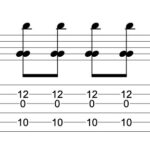The E major chord is a cornerstone for any aspiring guitarist. It’s often one of the first chords beginners learn, and for good reason. The E Major In Guitar is incredibly versatile, appearing in countless songs across genres. Learning to play the E major chord smoothly and correctly will unlock a vast repertoire of music and form a solid foundation for your guitar journey.
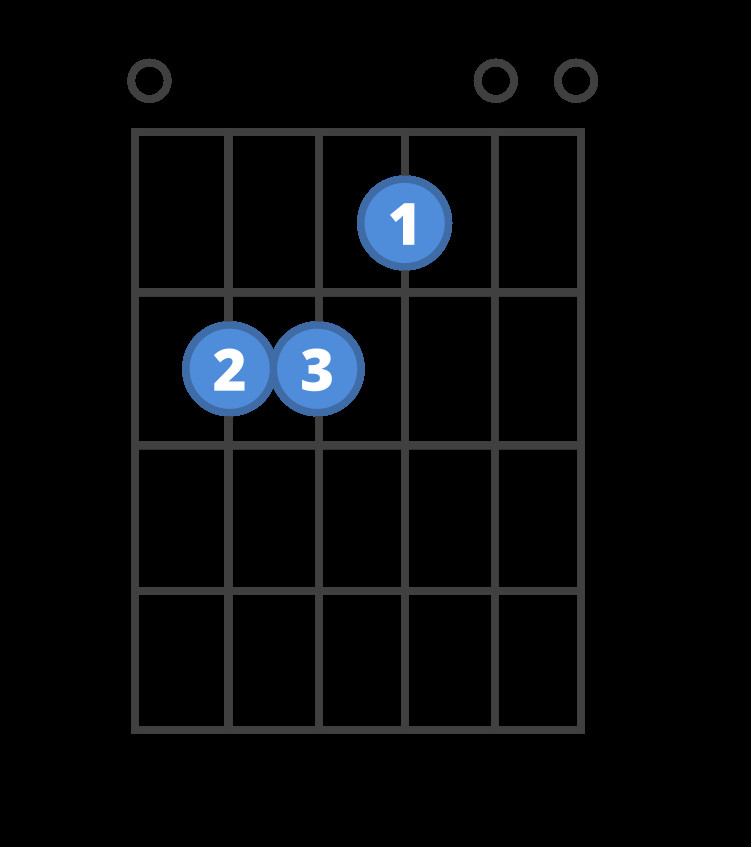 Chord diagram for the E guitar chord.
Chord diagram for the E guitar chord.
Step-by-Step: How to Form the E Major Chord
The E major chord is known for being relatively easy to grasp, requiring just three fingers in a straightforward configuration. Here’s a simple, step-by-step guide to get your fingers in the right place and start strumming this essential chord:
-
Index Finger Placement: Locate the first fret on your guitar’s fretboard. Now, find the third string (G string – the third thinnest string). Place your index finger just behind the first fret on this string. Apply enough pressure to ensure a clear sound, but don’t press too hard.
-
Middle Finger Position: Move to the second fret. Find the fifth string (A string – the second thickest string). Place your middle finger just behind the second fret on this string, again applying firm but not excessive pressure.
-
Ring Finger Placement: Staying on the second fret, locate the fourth string (D string – the fourth thinnest string). Place your ring finger just behind the second fret on this string, mirroring the placement of your middle finger.
-
Strum All Six Strings: Once your fingers are correctly positioned, ensure each string rings clearly. Strum all six strings downwards, from the thickest (6th string, low E) to the thinnest (1st string, high E). Listen for a rich, full sound. If you hear any buzzing or muted strings, adjust your finger positions slightly until the chord rings out cleanly.
Why the E Major Chord is Essential
The e major chord in guitar isn’t just easy to learn; it’s fundamentally important because it’s incredibly common in popular music. Understanding and mastering this chord opens doors to playing countless songs and understanding basic chord progressions.
- Foundation of Many Songs: You’ll find the E major chord in a huge array of songs across genres like rock, pop, country, and blues. Its bright, uplifting sound makes it a favorite for songwriters.
- Common Chord Progressions: E major frequently appears in fundamental chord progressions. A very common progression is E-A-B (I-IV-V in the key of E major). This progression is the backbone of countless songs and is crucial for developing your ear and understanding musical structure.
- Key of E Major: Learning the E major chord naturally leads to exploring the key of E major. Understanding keys helps you learn to play melodies, improvise, and write your own music. The E major scale and key are essential concepts for any guitarist wanting to progress beyond basic chords.
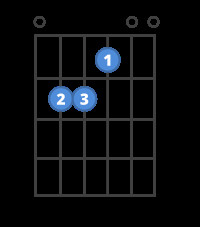 Chord diagram for the E guitar chord, small version, used in common chord progressions.
Chord diagram for the E guitar chord, small version, used in common chord progressions.
Songs and Progressions to Practice E Major
To put your E major chord into practice, try learning songs that feature it prominently. Starting with simple chord progressions will also help you solidify your understanding and finger memory.
Simple Chord Progressions:
- E – A – B: This is a foundational progression. Practice transitioning smoothly between these chords.
- E – B – C#m – A: This adds a minor chord (C#m) to create a slightly more complex and emotionally rich progression, very common in popular songs.
Example Songs:
-
“Beast of Burden” by The Rolling Stones: This classic rock song uses the E, B, C#m, A progression, showcasing how these chords work together in a real song context.
“EI’ll never Bbe your C#mbeast of Aburden”
-
“Mean” by Taylor Swift: A popular example in contemporary pop music that also utilizes the E, B, C#m, A progression.
“ESomeday BI’ll be C#mliving in a big old Acity And Eall you’re Bever gonna be is Amean”
Expanding Your Chord Vocabulary: Next Steps
Once you’re comfortable with the e major in guitar, expanding your chord vocabulary is the next logical step. Learning chords that commonly accompany E major will allow you to play even more songs and develop a deeper understanding of harmony.
- A Major Chord: The A major chord is a frequent companion to E major. Learning A major will immediately expand the number of songs you can play, especially when combined with E.
- B7 Chord: The B7 (B dominant 7th) chord is another crucial chord to learn alongside E major. It often functions as the “V” chord in the key of E, creating a strong resolution back to E major. The B7 adds a bluesy, dominant flavor to your playing.
- C# Minor Chord (C#m): As seen in the song examples, C#m is a common minor chord that works beautifully with E major, adding emotional depth and variety to chord progressions.
Learning these chords – A major, B7, and C# minor – will significantly enhance your ability to play a wider range of songs and understand more complex musical ideas in relation to the e major chord in guitar.
[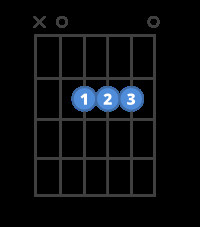 Chord diagram for the A guitar chord.
Chord diagram for the A guitar chord.
HOW TO PLAY
A Major](/chords/a-major)
[ Chord diagram for the B7 guitar chord.
Chord diagram for the B7 guitar chord.
HOW TO PLAY
B7](/chords/b-7)
[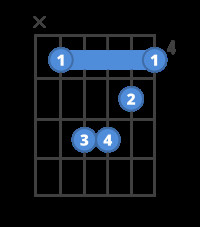 Chord diagram for the C#m guitar chord.
Chord diagram for the C#m guitar chord.
HOW TO PLAY
C# Minor](/chords/c-sharp-minor)
Further Resources for Mastering E Major
To solidify your understanding and playing of the e major in guitar, and to continue your guitar learning journey, here are some helpful resources:
- Chord Coach: Utilize interactive chord training tools to practice forming the E major chord and transitioning between it and other chords.
- Video Lessons: Visual learning can be incredibly effective. Watch video lessons specifically focused on the E major chord to see proper finger placement and strumming techniques in action.
- Beginner Guitar Courses: Consider enrolling in a comprehensive beginner guitar course. These courses typically start with fundamental chords like E major and systematically guide you through the basics of guitar playing.
[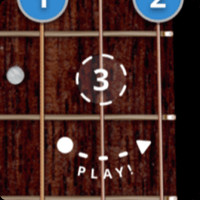
Start playing the E chord »
Chord Coach](https://www.chordbank.com/o/chordtraining?gtx=E)
[
Learn the E chord »
Video – 1:07](https://www.chordbank.com/o/rkvid?vid=E)
Conclusion
The e major chord in guitar is more than just a beginner chord; it’s a fundamental building block for your guitar playing journey. Mastering this chord opens up a world of musical possibilities, from playing countless popular songs to understanding essential chord progressions and musical keys. Practice the E major chord diligently, explore the suggested songs and progressions, and continue to expand your chord vocabulary. With consistent effort, you’ll find the E major chord becoming a comfortable and reliable part of your guitar playing.

